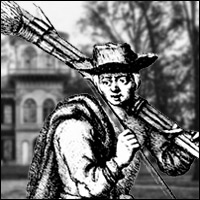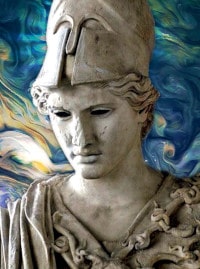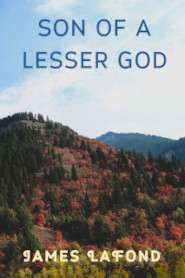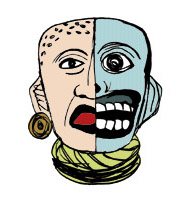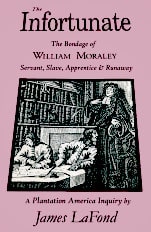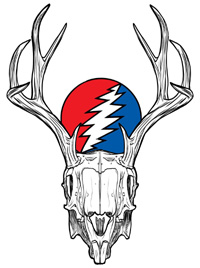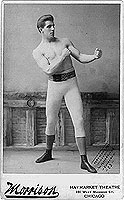In the winter of 2012 when I was researching The World is Our Widow, the middle portion of which was set in South America, I used the following book as a general guide. I had truly never had much interest in Latin American history beyond the early contact phase. This prejudice probably stemmed from the very low output of books in English on Latin America in the 1970s, 80s and 90s, when I was collecting books and ransacking libraries and book stores. I was guilty of prejudice of the ignorant strain—the most virulent one you know.
I recalled that reading Born in Blood and Fire had been enjoyable. A few days ago I was watching We Are Not Commies Anymore Rooski TV on this computer. The Anti-Slave Master news camera panned to the face of a South American head of state who was most certainly of Amerindian descent, with very little Spanish ancestry. He was the president of a nation, and had previously suggested that he would offer political asylum to an American dissident hiding in Moscow. On camera he seemed humorously indignant at the fact that he was then detained—on his presidential jet—while it was searched by Austrian cronies of the distant but omnipotent Chicago Slave Master.
Upon viewing this bit of non-Botox news I recalled John Charles Chasteen’s book, and his explanation of the processes by which the paradise that was once South/Central America had been transformed into an ignorant mud-pit plundered by agents of distant European and American fat cats. I picked the book up a few days ago and enjoyed it again.
Born in Blood and Fire
A Concise History of Latin America
John Charles Chasteen
2001, Norton, NY, 352 pages
This book used the best scheme I have ever seen for an introductory general history. The book was written to educate ignorant gringos like me who thought the history of Latin America ended with Coronado and Soto, and began again with Ronald Regan and Pablo Escobar. Mister Chasteen does an impeccable job of sketching in that vast span of time between the European quest for gold and the American quest for something to blow up our nose.
The volume begins with a timeline for the three largest Latin American nations. The book is ordered in 11 chapters with 11 maps. Each chapter is broken in two: the Current and a Countercurrent. For example, Chapter 3, Colonial Crucible, explains the process by which tiny bands of late-medieval European adventurers imposed their corrosive will on vast populations of simple to sophisticated stone-age people. Throughout the rest of the book the author returns to the ramifications of this foundation—echoed in his title—in explaining the largely sordid results. At the end of the chapter the dominant trends are put into perspective by providing a ‘countercurrent’ in the form of the opinion and person of Friar Bartolome de las Casas, one of Planet Earth’s first humanitarian activists.
And on the book goes in this vein, marching the reader through this unique history and then placing a hand on his shoulder and pausing for an alternative viewpoint. Due to this artifice I will venture to say that this book is, to my knowledge, the single ‘best-structured’ investigation of the human condition in regards to the evolution of social composition.
I would rather not discuss the key concepts examined by the author and leave that to him. Rather let me describe a single illustration from a French travel book of 1879: a bearded European tourist sits in a wooden chair, his broad hat shedding the torrent of tropical rain that bursts from the sky above the craggy Andean Mountains in the background, the second highest mountain range on earth. Rain pours from the lashed wood of the heavily framed chair. Your eyes are drawn to the booted feet of the man which rest their heels on a platform. You see, the chair is elevated some three feet off the ground, and its occupant ‘white-knuckles’ it, grasping the front dowel of his seat frame like a pre-modern rollercoaster passenger as he gazes off into the gorge that falls away to the left of the picture frame into the empty space above some unseen miles-deep river. You notice that the chair is reclined and high-backed, and that it is strapped to the back and forehead of an Indian ‘porter’ who climbs the ancient hewn-rock Inca Era staircase, in line behind another barefoot porter, hauling another lazy white ass up the jagged mountain stairs in the driving equatorial rain!
Why do these indigenous people still resent Europeans exploiting them?
Why was the President of Bolivia not surprised at being molested by a white power broker on one continent, on behalf of his half-white warlord on another continent, while he tried to use one of the Whiteman’s own magnificent flying machines to get back to the tiny landlocked portion of the planet that his masters have permitted he and his people to inhabit?
Mister Chasteen answers these questions succinctly in the following passage, “…hegemony, a kind of domination that implies a measure of consent by those at the bottom. Hegemony contrasts with control by violent force. It is a steady preponderance rather than an iron rule. Though it may seem ‘soft,’ this form of political power is resilient and does devastating damage to people at the bottom. When they accept the principal of their own inferiority and, in the old-fashioned phrase, ‘know their place,’ they participate in their own subjugation.”
This rule of social servitude delineated by Chasteen states by omission the obvious reason for the transfer of servitude from the backs of disposed whites to the backs of dispossessed blacks, accelerating markedly in Peter Williamson's lifetime, and at the same time explains the remorseless expansion of the American frontier in opposition to English Colonial and later American Judicial will, as soon as enough whites escaped the English plantation system and began living in competition with the Native Americans. There was something in the social character of the poor—and often criminal, vagabond and rogue elements—white classes to permit them to participate in their own subjugation any longer than it took for them to put a weapon in their hands.
The next time that dude that looks like he could be President of that country where your son’s cocaine is cultivated cuts your lawn, perhaps you might decide to pick up Born in Blood and Fire so you can better understand why he is your slave for only so long as it takes for him to put a weapon in his hand, and why The Man in The Big House on the Potomac is your Rightful Lord and Master.


